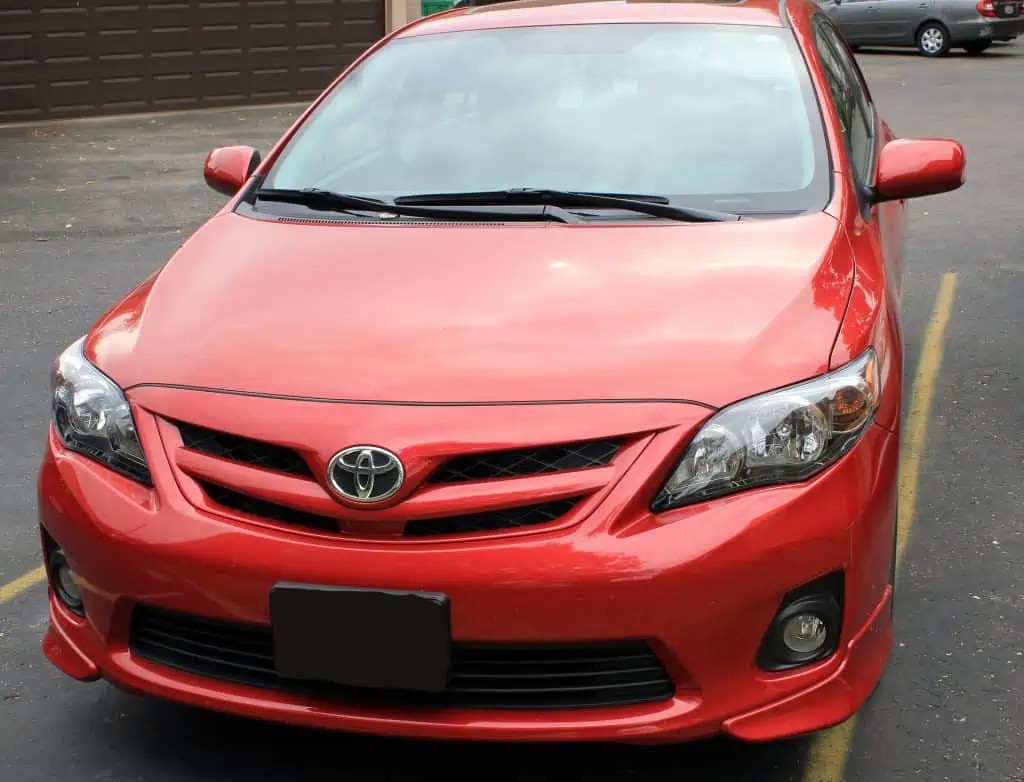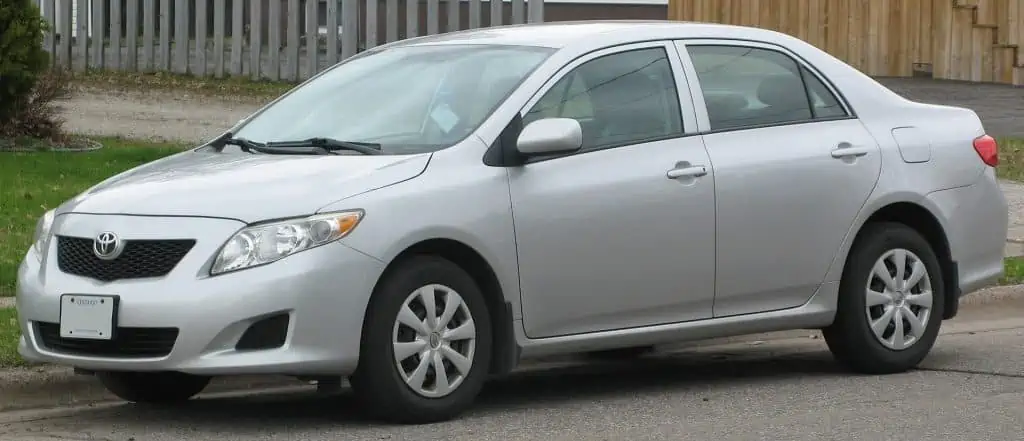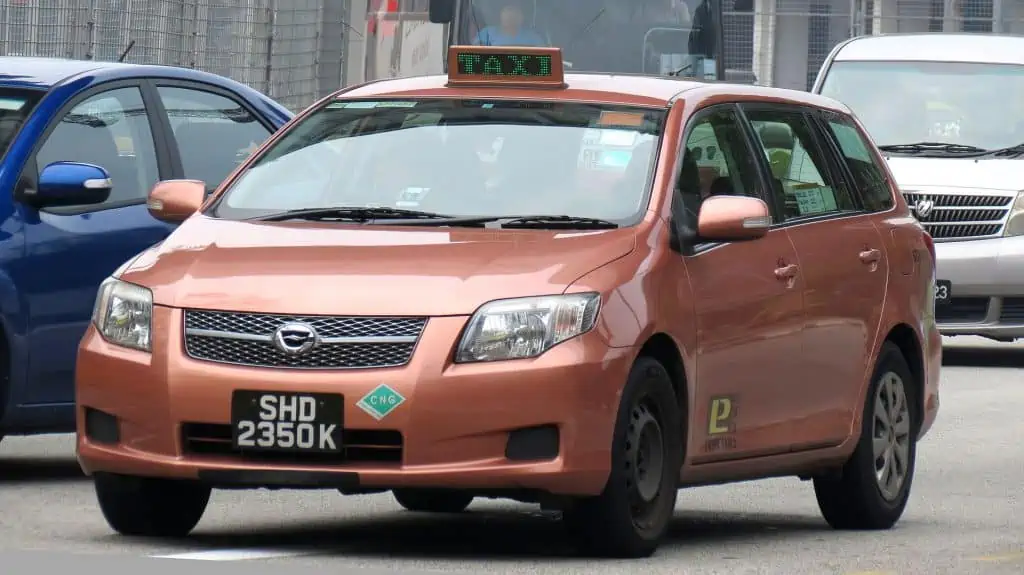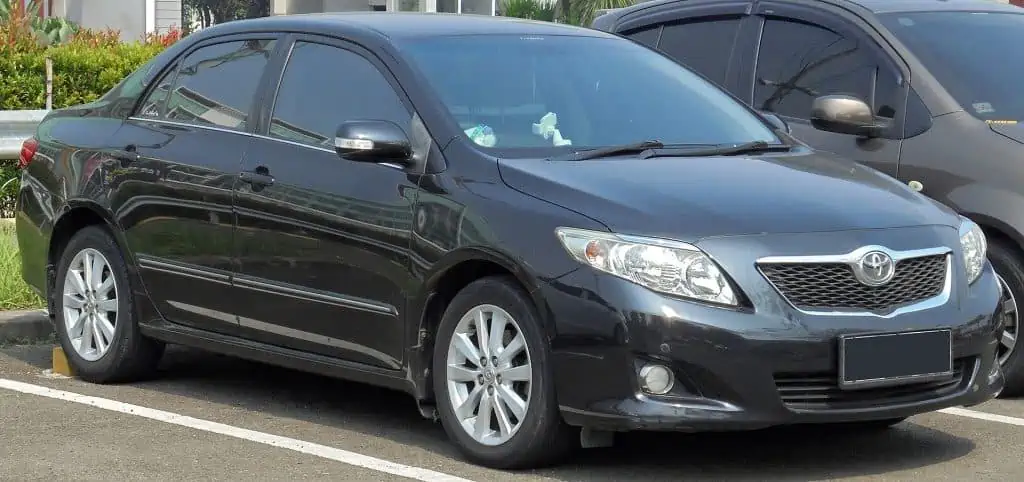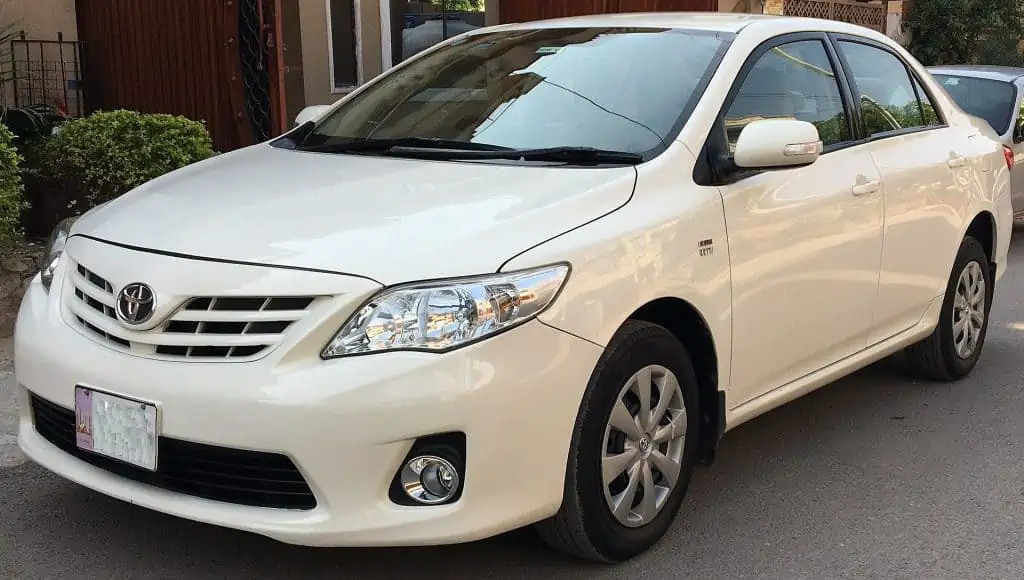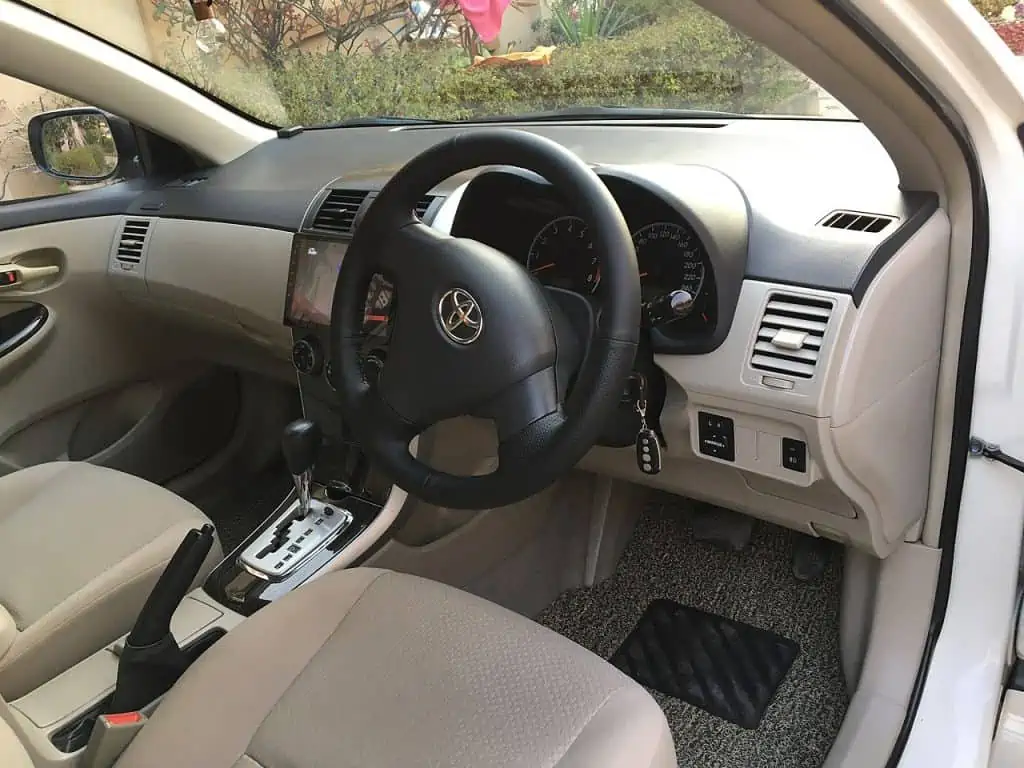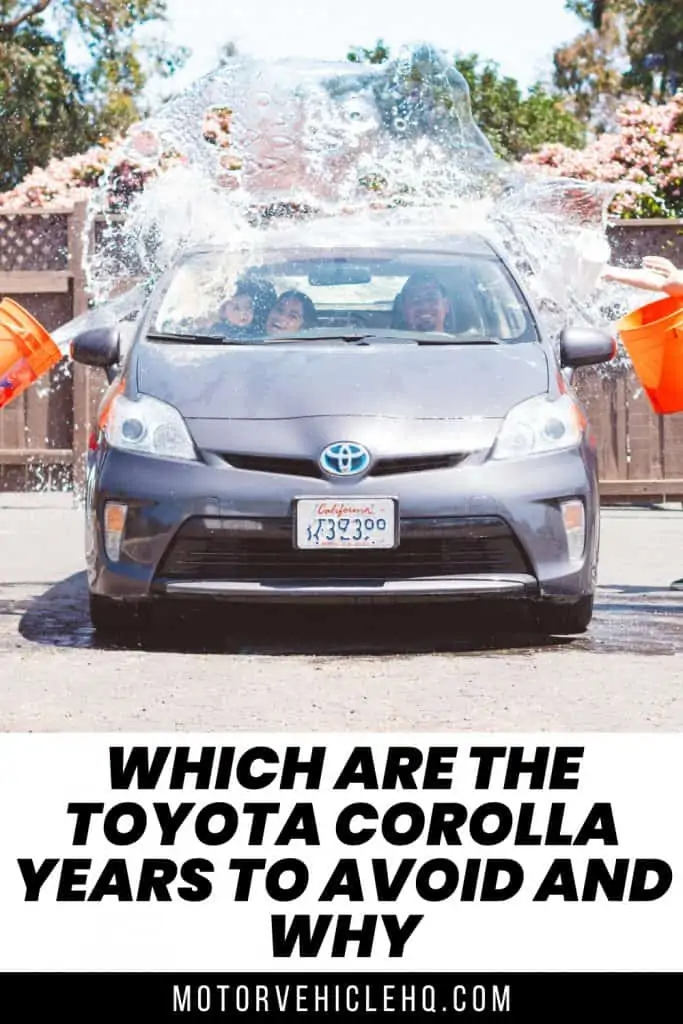A family of subcompact and tiny vehicles created and manufactured by Toyota, the Corolla was initially presented in 1966.
The Corolla was once the most popular vehicle on the planet, and in 1997 it was named the best-selling nameplate ever. After 20 years, Toyota has sold 44 million Corollas across 12 models, an incredible accomplishment.
The more recent and newer vehicles have been front-wheel drives, whereas earlier models had rear-wheel drives. The Nissan Sunny and the Honda Civic are not direct competitors, although four-wheel drive variants are available and have been made throughout the generations.
We begin evaluating the Toyota Corolla with the ninth generation, which debuted in August 2000. The latest generation, which is known as the Corolla Altis, was to be released in the middle of 2021. Following the ninth generation, the Corolla Axio was sold in Japanese markets as the tenth generation, which was unveiled in 2006.
With the new option now being offered in either a 1.3-liter or 1.5-liter four-cylinder engine and either front-wheel drive or all-wheel drive, the eleventh generation began production in May 2012. The twelfth generation, which has been manufactured since 2018 and made its premiere at the Geneva Motor Show, is the final generation we’ll talk about.
Since its introduction in 1966, the Toyota Corolla has purportedly sold more than 44 million vehicles worldwide (though some may argue that since there are multiple distinct Corolla models, not all of those sales should be included). It has been successful in establishing a reputation as a reliable, inexpensive automobile.
Despite living up to this reputation, the model has certain drawbacks. While some years have considerably better service histories, some have had their fair share of problems. CoPilot will thus inform you of the model years to steer clear of if you’re looking to buy a secondhand Toyota Corolla.
Which are the Toyota Corolla Years to Avoid?
Excessive oil consumption in the engine has been one of the Toyota Corolla’s most often encountered issues during its lifetime. Although it did occur in other years like 2014, these model years saw a higher prevalence of it: 2000, 2001, 2002, and 2009.
Toyota Corolla. The Corolla was once the most well-known car in the world, and it was recognized as the best-selling brand ever in 1997. It is a remarkable feat that Toyota has sold 44 million Corollas across 12 versions in only 20 years.
The 2003 and 2009 models, however, were plagued with transmission issues. Particularly in 2009, cooling issues as a result of water pump failure were often reported. These model years had more minor difficulties than others, such as body/paint, and interior accent problems.
Despite being a trustworthy everyday vehicle, there are a few Toyota Corolla model years to stay away from, specifically:
- The 2000 Toyota Corolla
- The 2001 Toyota Corolla
- The 2002 Toyota Corolla
- The 2003 Toyota Corolla
- The 2009 Toyota Corolla
- The 2014 Toyota Corolla
Excessive oil consumption has been the one issue the Toyota Corolla has faced more frequently than any other. From 2000 to 2002, a span of three years, 124 complaints of excessive oil usage were made.
This might not seem so awful, but fixing it might be expensive, with a likely cost of $2,500 and lots of space for increase. If the oil level dropped too low and you weren’t ready, it is a problem that, if left unattended, might cause additional wear and tear.
In 2009, this issue resurfaced, with sources estimating a staggering average repair cost of $4,500. While there were no major problems between those years, the 2003 model still had serious transmission failure problems that required at least $1,000 in repairs.
And as was already said, the 2014 model took into account how prevalent these issues were and how costly repairs may be.
1. The Toyota Corolla Model Year 2000 Complaints
Frequent damage to the Piston Rings: One of Corolla’s primary issues is worn piston rings, which can result in excessive oil use and potentially expensive engine failure. Low oil levels and oil sludge accumulation are signs of worn piston rings.
Failure of the Airbag Control Module: The front and side airbags of the 2003 to 2004 Corolla has been known to suddenly and outside of their intended purpose. The problems with the airbags were caused by extreme noise short-circuiting the circuits in the automobiles, which led to erratic airbag deployment.
The Toyota Corolla’s most chronic problem is its excessive oil consumption. One of the most frequent issues with the 2000 Toyota Corolla is that the check engine light is on, along with engine issues, engine failure, and these issues.
This car was not only using too much oil, but it also leaked oil.
The fact that this specific model uses more oil than gasoline has become a running joke because of how severe the issue was. Many indicate that following repairs, the issue only persists for a little while before going back to normal.
2. The Toyota Corolla Model Year 2001 Complaints
The gearbox is the primary area of concern for the Corolla model year 2001, with more customer complaints than NHTSA concerns about seatbelts and airbags.
The largest complaints from owners are about grinding noises, loud transaxles at the gearbox, and transmission and differential failure. At around 116,000 miles, the transmission begins to fail, costing about $2,830 to repair.
Regarding the seat belts and airbags area, the NHTSA received over 300 complaints. These concerns led to 42 accidents, 44 injuries, and an average of around 72,000 miles driven.
2010 Toyota Corolla by SsmIntrigue / CC BY-SA 4.0. As a consequence of a Flexible Flat Cable (FFC) that was placed improperly and would have resulted in damage, certain 2010 Corolla vehicles were recalled in 2014. If the cable is damaged, the driver’s airbag may completely deactivate and stop functioning.
The car’s airbags don’t activate following collisions, the airbag light flashes on and off while driving, and the airbag warning indication stays lit, according to users.
Both the Toyota Corolla 2000 and its replacement, the Corolla 2001, suffered from excessive oil use. Even though it wasn’t as bad as it was in the 2000 model, maintaining a car with this issue was a hassle.
The fact that the check engine light was on in the background was another issue. This was a critical concern since the light may continue to illuminate even if there was a serious issue with the car. The brand-new EVAP system in the automobile was to blame for this.
3. The Toyota Corolla Model Year 2002 Complaints
The Toyota Corolla had more troubles than prior generations, with the problems starting to show up around the 2000 model year. The first generation had very few issues.
The engine is the primary area of concern for the 2002 model year, and the NHTSA has received several concerns about seatbelts and airbags as well.
The most common engine-related complaints from consumers involved the engine consuming too much oil, the engine breaking down, the engine making a tapping noise, and the engine buzzing when accelerating.
The normal repair cost is in the neighborhood of $2,600 and happens at roughly 97,000 miles for the engine utilizing extra oil.
4. The Toyota Corolla Model Year 2003 Complaints
The gearbox is the primary area of concern for the Corolla model year 2003, with more customer complaints than NHTSA concerns about seatbelts and airbags.
The largest complaints from owners are about grinding noises, loud transaxles at the gearbox, and transmission and differential failure. At around 116,000 miles, the transmission begins to fail, costing about $2,830 to repair.
Regarding the seat belts and airbags area, the NHTSA received over 300 complaints. These concerns led to 42 accidents, 44 injuries, and an average of around 72,000 miles driven.
The car’s airbags don’t activate following collisions, the airbag light flashes on and off while driving, and the airbag warning indication stays lit, according to users.
5. The Toyota Corolla Model Year 2009 Complaints
The 2009 model year saw the most user and NHTSA complaints after two years of relatively few issues, with the majority of user concerns concentrating on the engine and the NHTSA filing 555 complaints addressing the seatbelts and airbag system.
User complaints about the engine include high oil consumption, loud engine noises, the check engine light coming on, the car surging, the car not starting, the rapid power loss, and the accelerator sticking.
The whole cost of repair to address the excessive oil consumption is about $4,570, and it takes place at about 100,000 kilometers.
The frontal airbags, side and window airbags, the rear seat belts, and the buckle assembly are the principal subjects of NHTSA complaints about seat belts and airbags. These problems, which arise at about 16,000 miles, have resulted in 48 crashes, 1 fire, 40 injuries, and 1 fatality.
6. The Toyota Corolla Model Year 2014 Complaints
There have been several instances of malfunctioning airbags in Corolla models from later model years, particularly the 2014 Corolla. The airbags on the 2014 Corolla were once again the subject of several complaints on Car Complaints.
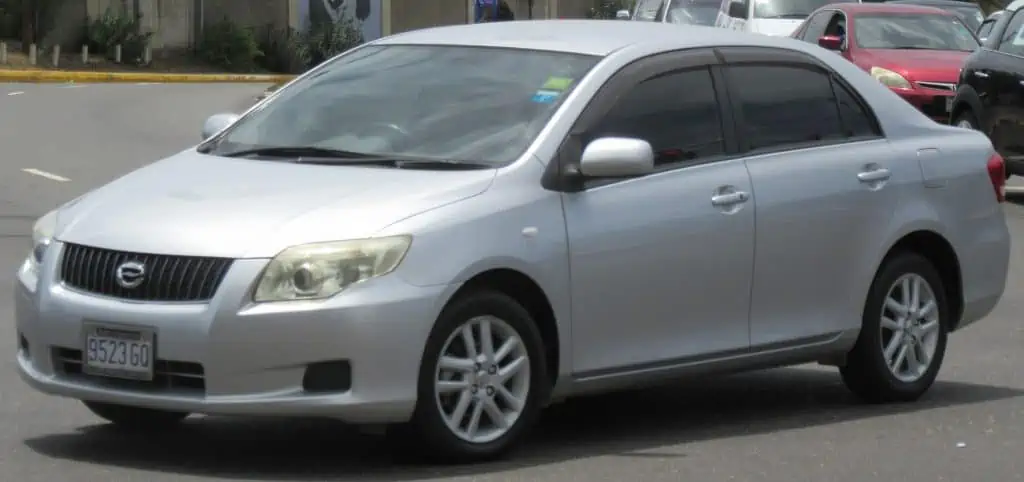
And once more, sadly, one individual perished as a result of these airbags. The typical Corolla was comparatively new at the time of the collision, and more people were hurt. According to Car Complaints, the 2014 Corolla’s airbags are the subject of an ongoing inquiry. There has not yet been a recall.
The inside of the 2014 Corolla received a lot of criticism as well. The 2014 Corolla’s radio just quit working, according to the most frequent of these accusations. Although this wasn’t a risky situation, it was nonetheless very pricey.
According to Car Complaints, the typical owner spent $1,300 to fix their radio. The typical Corolla owner had 50,000 miles on their vehicle, therefore this problem was only affecting relatively old Corollas.
In general, Corolla has earned a reputation for dependability. Purchasing a Corolla is a wise decision, provided you conduct a thorough research first.
Which Toyota Corolla Model Years are Safe to Buy Used?
Every model year of this automobile, which is among the best-selling in the world, has its problems, but there are many years with fewer faults that have been documented and that you should feel secure purchasing. Numerous of these models have been in use for some time and should do so for many more:
- The 1984 Toyota Corolla
- The 1985 Toyota Corolla
- The 1986 Toyota Corolla
- The 1987 Toyota Corolla
- The 1988 Toyota Corolla
- The 1989 Toyota Corolla
- The 1990 Toyota Corolla
- The 1991 Toyota Corolla
- The 1992 Toyota Corolla
- The 1993 Toyota Corolla
- The 1994 Toyota Corolla
- The 1995 Toyota Corolla
- The 1996 Toyota Corolla
- The 1997 Toyota Corolla
- The 1998 Toyota Corolla
- The 1999 Toyota Corolla
- The 2004 Toyota Corolla
- The 2005 Toyota Corolla
- The 2006 Toyota Corolla
- The 2007 Toyota Corolla
- The 2008 Toyota Corolla
- The 2011 Toyota Corolla
- The 2012 Toyota Corolla
- The 2013 Toyota Corolla
- The 2015 Toyota Corolla
- The 2016 Toyota Corolla
- The 2017 Toyota Corolla
- The 2018 Toyota Corolla
- The 2019 Toyota Corolla
- The 2020 Toyota Corolla
Although the Corolla began manufacturing in 1966, our statistics only go back to 1984. However, the majority of those years have had very few faults, many of which are minor ones like body paint chipping.
There were less than 100 complaints made about the model overall from 1984 until the turn of the century, which is particularly surprising given how well the model has traditionally sold, according to Toyota’s data, at least 10 million cars were sold during that period.
Toyota Corolla Fielder by ANP / CC BY-SA 3.0. The major signs of a Toyota Corolla Fielder gearbox issue are a lack of power, a slow driving sensation, and excessive fuel consumption. etc
Not that any of these models were flawless. For older models, transmission problems and harsh or overheated engines occasionally caused complaints.
However, up until around 1998, the most frequent issues were simply items not operating as they should, leaks in the air conditioning systems or door seals, and improperly functioning inside lighting.
The AE80, AE90, and AE100 models, which were produced from 1983 to 1995, were high-quality automobiles built to last a lifetime even if they aren’t very frequent on the road now.
Although 25 to 35 years may be too long to expect from a daily driver, these automobiles were dependable for their owners for many years. Even though they could be more challenging to obtain, if you can discover one, you might be holding a little treasure.
Even though concerns with excessive oil consumption first surfaced in the 1998 and 1999 models, there were no Toyota Corollas to steer clear of in your secondhand car search before the 2000 model year.
The versions built from the 2004 model year through the 2008 model year provided the famous Toyota Traveler with a much-needed return to form. Unfortunately, there were significant dependability issues with the models produced between 2000 and 2003. But we’ll explain why in more detail later.
There have been complaints of unusual engine noises for a few years, and there have also been some reports of the 2006 model’s acceleration difficulties either not working or surging rapidly. Nevertheless, each year only a tiny number of these issues appeared.
The outside paint’s quality and the check engine light’s erroneous illumination were the most often voiced grievances throughout these years. Certain difficulties shouldn’t make you steer clear of these model years, even though you don’t want to see them with your automobile.
And except for the 2009 model, most Corollas produced afterward have been safe vehicles. The only significant problem with Corollas since has been the accelerator activating without your permission.
Avoid 2011, 2013, and 2017 models if you don’t want to run the risk of dangerous scenarios. However, it’s important to note that even for these model years, there were only a small number of complaints of this problem, which often surfaced early in the life of the vehicle.
The most frequent issues with the most current models, aside from this serious but extremely unusual condition, have been grinding brakes, which can reduce their lifespan, and issues with the cabin’s build quality.
This includes little problems like the dashboard creaking, lock troubles, and interior rattles. The 2014 model, which had several instances of the radio malfunctioning, was the only model year when these internal problems were widespread and expensive.
Which are the General Problems Associated with the Toyota Corollas?
Regardless of its dependability, the Toyota Corolla can experience a variety of issues depending on the model year. The most frequent issues for various model years are listed below:
1. Excessive Consumption of Oil
Toyota Corolla owners from 2002 and 2009 have reported concerns with their engines using too much oil. A few of them had only had their Corollas for a little over a month.
Replaced piston rings, heavier oil, and the most costly fix, replacing the engine, which may cost $2,600 to $5,000 or more, are some remedies for the Toyota Corolla oil consumption issue.
2010 Toyota Corolla Altis by オーバードライブ83 / CC BY-SA 4.0. The Corolla Altis, the newest model in the lineup, was scheduled to go on sale in the middle of 2021.
Even though some owners claim their dealership fulfills a normal warranty, this may depend on the vehicle’s eligibility.
2. Errors Associated with the Transmission
The Toyota Corolla from 2003 is infamous for its gearbox problems. Some owners claim that their gearbox failed in the middle of the road despite routine maintenance.
Many of them reported hearing odd grinding and clunking sounds before their automobiles abruptly came to a halt. It’s a problematic issue that might turn dangerous, thus it must be resolved right once to avoid accidents or collisions.
Rebuilding or replacing the transmission entirely has been suggested as a fix for this issue, however, doing so can cost anywhere between $1,200 and $2,500 depending on labor rates and component prices.
3. A Sluggish Engine Start-Up
It’s very uncommon for Toyota Corolla owners to report that their cars are difficult or impossible to start. Some owners claim that this can occur between 100,000 and 125,000 miles into the car’s lifespan.
It would be preferable to consult a qualified mechanic on this issue as starting failure is the most frequent culprit and may need replacing the beginning solenoid or the entire starter.
Other factors that may prevent your automobile from starting normally include a weak or corrosion-prone battery and a blocked fuel filter. The Toyota Corolla 2015 is one of the most frequent issues, however, models from 1990 to 2014 may also have this problem.
4. Check Engine Light Comes On Because of the EVAP System Malfunction
The evaporative emission (EVAP) system on Toyota Corolla cars made from 1998 to 2016 frequently malfunctions, turning on the check engine light.
Although it may be more challenging to pinpoint this specific issue, some automobile owners have claimed that a broken gas cap or a failed charcoal canister are two potential culprits.
If you notice this issue, speak with a qualified mechanic to see if the EVAP system has any malfunctioning components that, if not fixed, might lead to more extensive harm.
5. Defective Airbags
There have been a good number of airbag recalls involving Toyota Corollas. Toyota Corollas from 2003 to 2013 were recalled in 2019 due to the risk of an airbag inflator rupture that might send metal fragments flying at the passengers of the vehicle and cause harm or injury.
Some 2009 to 2010 Corolla vehicles were recalled in 2014 as a result of a Flexible Flat Cable (FFC) that was installed incorrectly and might have caused damage. The driver’s airbag may entirely deactivate and cease to work if the cable is destroyed.
Toyota also had to recall some Corolla models from 2010 to 2013 in 2013 because of frontal airbags that failed to deploy when necessary as a result of improper calibration of the passenger seat occupant sensing system.
They also had to recall some Corolla models from the years 2003 to 2004 due to defective supplemental restraint system (SRS) circuits that could cause airbags to deploy unnecessarily.
6. Steering-Related Drifts
Steering drift is one of the issues with some 2010 and 2009 Toyota Corolla models, and it even sparked an inquiry by the National Highway Traffic Safety Administration (NHTSA). The car’s on-center steering has been criticized by several owners as being insufficient.
2013 Toyota Corolla by Illusive255 / CC BY-SA 4.0. Toyota Corollas have been the subject of a sizable number of airbag recalls. Due to the potential for an airbag inflator rupture that might send metal pieces flying toward the car’s occupants and inflict harm or injury, Toyota Corollas from 2013 were recalled in 2019.
It was harder to maneuver Corollas effectively, according to owners. The study found that the electronic power steering system’s stock calibration, which had an impact on on-center steering, was to blame.
The issue was resolved without the need for a recall thanks to a technical service bulletin that Toyota issued for an optionally calibrated EPS electronic control unit that enhanced the on-center steering sensation.
7. Ineffective Mass Air Flow Sensor
To maintain normal acceleration, Corollas manufactured from 1998 to 2010 may require cleaning or a new mass airflow sensor. Otherwise, acceleration can drag and impair the performance of the entire vehicle. This condition may cause the check engine light to come on in addition to difficulties with acceleration.
To identify whether your vehicle’s mass airflow sensor needs cleaning or replacement, it is advisable to consult a specialist. The usual cost for mass airflow sensor replacement ranges from $200 to $290, depending on the part price and labor cost rates.
How Reliable are the Toyota Corollas In Comparison to Other Vehicles In Its Category?
The pros and drawbacks of the 2020 Toyota Corolla will determine how reliable it is. Sadly, despite having a high anticipated reliability rating, the Corolla comes in last place among compact cars because of its poor performance and cramped interior.
The Toyota Corolla’s outstanding fuel efficiency and miles per gallon, class-leading dependability rating, and active safety systems are among its advantages. The slow and unimpressive engine base, the uneven gearbox operation, and the uncomfortable back seat on lengthy trips are some of this Corolla’s drawbacks.
The Toyota Corolla received a #8 ranking in the Compact Cars category, a #10 ranking in the Hatchbacks category, and a #12 ranking in the Small Cars category despite these drawbacks and Toyota Corolla issues. It was also a finalist for the title of 2020’s Best Compact Car for the Money.
The US News Scorecard received an amazing 4.5 out of 5 stars from JD Power and received an overall rating of 8 out of 10. The critics’ rating was 7.5 out of 10, performance averaged 7.1, interior scored 7.0, and safety scored 9.8 out of 10.
Comparison of the Reliability of the Mazda 3 with the Toyota Corolla
When compared to the Corolla, the Mazda 3 is a more robust and performance-focused alternative. The Mazda’s engine is powerful, fast, and nimble. It also handles well and engages swiftly. Along with the performance, the interior is elegant and opulent.
Both of these vehicles are offered as hatchbacks or sedans, however, neither one excels in terms of passenger space. The driver assistance features and higher expected dependability rating of the Corolla are advantages.
Comparison of the Reliability of the Honda Civic with the Toyota Corolla
A well-rounded small automobile that narrowly edges out the Toyota Corolla is the Honda Civic. The Civic is available in a variety of body types, including sedan, coupe, and hatchback, offering you a selection of engines to employ.
The Honda Civic’s entertainment, as well as the infotainment system, is optional and more expensive, but the Corolla’s is standard.
Some could counter that the Honda is a more fascinating and entertaining car to drive than the Corolla. The Civic also offers greater internal room in the backseat and has a finer, more opulent cabin, giving it a more affluent appearance.
Toyota Corolla interior by Illusive255 / CC BY-SA 4.0. The Corolla, although having a high expected dependability rating, finishes last among compact cars because of its subpar performance and cramped interior.
Toyota Corollas: How Long Do They Last?
The answer to the aforementioned query is influenced by many variables, including owner usage, routine servicing/maintenance schedules, and even regional geography.
Thanks to manufacturing techniques like Kaizen and lean production, Toyota has perfected operational efficiency. Because of this, every Toyota product is very well-made and long-lasting. Given that,
If a Toyota Corolla has a good service history and has been well-maintained, it is expected to endure 300,000+ miles (or 10 years). With basic maintenance and fixes like checking brake pads and fluids, some first-hand owners have even gotten 400,000 miles (or 20+ years) out of their Corollas.
The Conclusion
Between dependability and technology or features, a separate line is drawn. Do not misinterpret these ideas.
Therefore, be aware that we concentrated all of the aforementioned assessments on the dependability or reliability of particular model years.
They aren’t concerned with any special qualities it could or might not have. We’re more concerned with how frequently it would break down.
Additionally, the numerous issues with the models to avoid are not exclusive to them. Although they often have less severity and volume, they can also be discovered on models that are approved.
Additionally, we may have overlooked models that are quite trustworthy. The same is true for well-known models. Therefore, don’t discount any model just because it isn’t included here.
Choose the ideal model for you by conducting your study, which we strongly advise.
Corollas have generally gained their reputation as trustworthy cars for a good purpose. If you do your research first, buying a Toyota Corolla is unquestionably a sensible choice.
You can determine which years are the riskiest and which ones you should invest in by using this article as a guide.
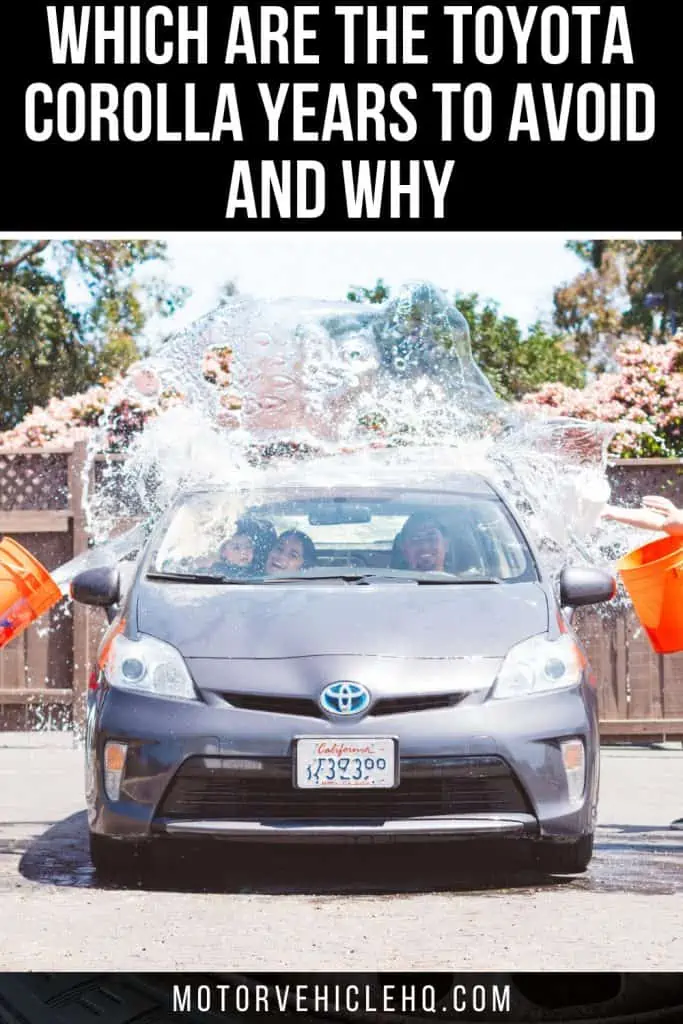

Nyangano Maurice specializes in vehicle troubleshooting and has more than 10 years of experience in the automobile industry. Over many years of experience as a car mechanic, he has acquired a broad range of skills, including engine repair, brake systems, electrical systems, and more. He frequently hosts community workshops and training programs to help motor vehicle owners understand their vehicles better.
